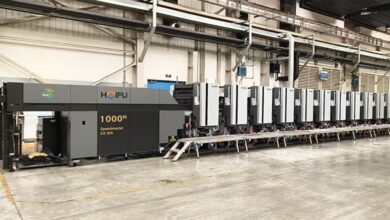Tetra Pak & Mengniu Group Offer Art through Milk Cartons

Food processing and packaging giant Tetra Pak and China’s leading dairy product manufacturer Mengniu Group have launched a limited edition Milk Deluxe Pure Milk range, customised with 30 different designs of masterpieces from Van Gogh and Monet.
Packaged in Tetra Prisma Aseptic 250 Edge cartons with DreamCap 26 closure, the special edition range has been brought to market through a collaboration with Meet You Museum. The cartons are now accessible to consumers, online and in stores, across Greater China.
Mengniu is the first dairy brand in the world to offer consumers these striking designs, which include some of the world’s most celebrated art, exploiting the unique design variability offered by Tetra Pak Custom Printing. These “handheld” works of art offer consumers an immersive experience; all whilst enjoying a nutritious milk drink.
Demand for product personalisation is increasing, as well as consumer expectations about more authentic engagement with brands. For food and beverage (F&B) manufacturers, leveraging technology such as Tetra Pak Custom Printing presents an opportunity to creatively respond to this rising demand; therefore, deepening the connection and interaction with consumers. In fact, packaging is increasingly acting as one of the main touchpoints between brands and end users. All of this while continuing to protect food safety and quality.
Tetra Pak Custom Printing is the first digital inkjet-based printing method in the carton packaging industry that is unrestricted by physical printing plates. Enabling greater design variability, it allows for over 30 designs on a single packaging material reel, producing sharper colour, detailed rendering and softer, more natural colour gradients. The vivid, eye-catching packaging designs create a unique visual experience for consumers, strengthening emotional bonds with the brands themselves.

The flexibility offered by Tetra Pak Custom Printing ensures brands can produce limited ranges or commemorative editions of their products in an agile way. The solution also gives F&B players the ability to quickly activate marketing efforts and capitalise on consumer trends, through purchasing as a live, product A/B testing exercise, boosting product innovation and seizing on commercial opportunities.
“Tetra Pak Custom Printing, with its high-quality printing capabilities and versatility in handling multiple, diverse packaging designs has helped us reach new heights in terms of mass customization,” comments Xiaoyan He, Senior Brand Manager of Milk Deluxe. “Our collaboration with Meet You Museum, fully exploiting the potential of this innovative solution, is helping Chinese consumers to enjoy timeless pieces of art from Vincent Van Gogh and Claude Monet on a daily basis. As such, it is a powerful tool for us to continue to foster a personal dialogue with those who choose our products every day.”
Julia Luscher, Vice President Marketing, Tetra Pak, adds, “We are excited to help Mengniu use one-of-a-kind designs and bring some of the world’s most famous masterpieces to customers’ fingertips, fully leveraging the unique features of Tetra Pak Custom Printing. Elevating our offering, re-thinking marketing strategies and charting new ways of consumer engagement are only a few of the ways we help our customers to be bold and stand out. We remain committed to continuing to do so with more F&B brands across the globe.”





